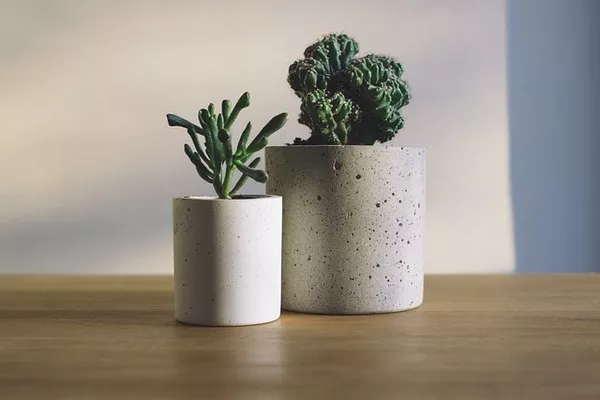Succulents, with their unique and captivating appearance, have gained immense popularity among plant enthusiasts and gardeners alike. These resilient plants are well-adapted to various environmental conditions, making them an excellent choice for both indoor and outdoor cultivation. While succulents are known for their ability to store water in their leaves, stems, and roots, the type of soil they are planted in plays a critical role in their overall health and vitality. In this article, we will delve into the characteristics of the ideal soil composition for succulents, exploring the key elements that promote growth, prevent root rot, and foster long-term success.
The Importance of Well-Draining Soil
One of the most crucial factors in ensuring the health of succulents is the soil’s drainage capability. Succulents are native to arid and semi-arid regions, where they have adapted to survive in soil with limited water availability. Consequently, they have developed efficient water storage mechanisms, allowing them to thrive in conditions that would be challenging for other plants. However, these adaptations also mean that succulents are prone to root rot when exposed to excess moisture for prolonged periods.
To prevent waterlogged roots and create an environment that mimics their natural habitat, succulents require well-draining soil. Ideal soil for succulents is one that allows excess water to escape quickly, promoting proper aeration and reducing the risk of root rot. This soil structure ensures that water is available when needed, while also preventing the roots from sitting in stagnant moisture.
Characteristics of the Perfect Succulent Soil
1.Good Drainage: The primary characteristic of succulent soil is excellent drainage. This can be achieved by using a mix that consists of coarse materials such as perlite, pumice, or sand. These components create air pockets in the soil, allowing water to flow through and roots to breathe.
2. Loose Texture: Succulent soil should have a loose and porous texture. This aids in water movement and root penetration while also preventing compaction, which can impede drainage and root growth.
3. Minimal Organic Matter: While organic matter is essential for soil fertility, succulent soil should contain minimal organic material. Excessive organic matter can retain moisture and increase the risk of overwatering, which is detrimental to succulent health.
4. Slightly Acidic to Neutral pH: Succulents generally prefer soil with a slightly acidic to neutral pH range (around 6.0 to 7.0). Maintaining the appropriate pH level supports nutrient uptake and overall plant health.
5. Mineral Content: Succulents benefit from soil that is rich in minerals, such as calcium, magnesium, and potassium. These nutrients contribute to robust growth, vibrant foliage colors, and overall resilience.
Creating Your Own Succulent Soil Mix
Creating a well-draining and suitable soil mix for succulents can be achieved by combining various components. A simple yet effective succulent soil mix can be formulated by combining the following ingredients:
1.Cactus or Succulent Potting Mix: Commercial cactus or succulent potting mixes are readily available and are formulated to provide the necessary drainage and aeration. These mixes typically contain a combination of peat moss, sand, and perlite.
2. Perlite or Pumice: Adding perlite or pumice to the mix increases its drainage capacity and prevents compaction. These lightweight materials create air pockets in the soil, allowing water to flow freely.
3. Coarse Sand: Coarse sand, such as builder’s sand or horticultural sand, contributes to the soil’s structure and drainage. It should be used in moderation to avoid overly compacted soil.
4. Mineral Amendments: Incorporating mineral amendments like crushed granite or crushed limestone provides essential nutrients and supports pH balance.
5. Optional: Vermiculite: Vermiculite can improve water retention without compromising drainage. However, it should be used in moderation to prevent waterlogged soil.
Proper Planting and Maintenance
When planting succulents in their new soil mix, it’s essential to follow proper techniques to ensure their success:
1.Choose Well-Draining Containers: Select pots or containers with drainage holes to allow excess water to escape.
2. Use the Right Potting Technique: Ensure that the succulent is planted at the same depth it was in its original container. Gently pack the soil around the plant’s roots to provide stability while avoiding compacting the soil excessively.
3. Watering Practices: Watering should be done thoroughly but infrequently. Allow the soil to dry out completely between waterings to prevent overwatering. The soil’s moisture level should be monitored rather than following a strict watering schedule.
4. Avoid Overcrowding: Overcrowding succulents in a single container can lead to poor air circulation and increased competition for resources. Provide adequate spacing between plants to ensure optimal growth.
Conclusion
The type of soil in which succulents are planted plays a fundamental role in their overall well-being and growth. A well-draining soil mix that mimics the conditions of their native habitat is essential for preventing root rot and ensuring long-term success. By combining ingredients such as cactus potting mix, perlite, pumice, and coarse sand, succulent enthusiasts can create an optimal growing medium that supports water retention, drainage, and nutrient availability. With proper planting techniques and mindful maintenance, succulents can flourish, displaying their unique beauty and resilience in a variety of indoor and outdoor settings.


